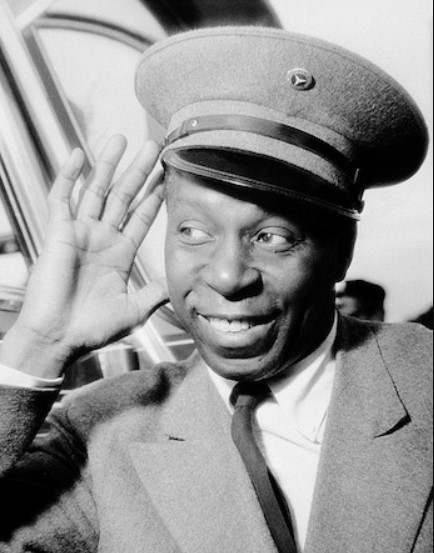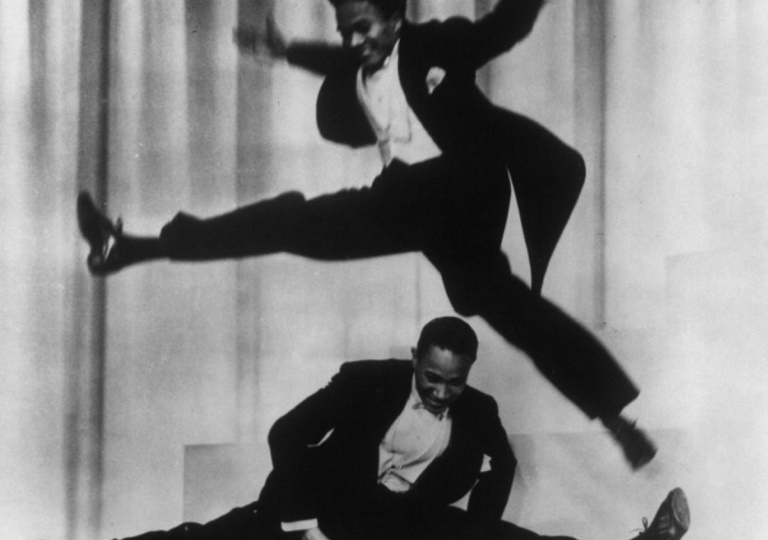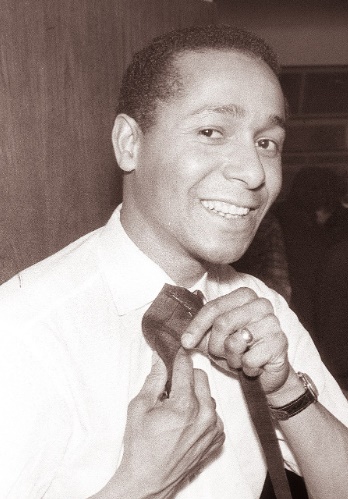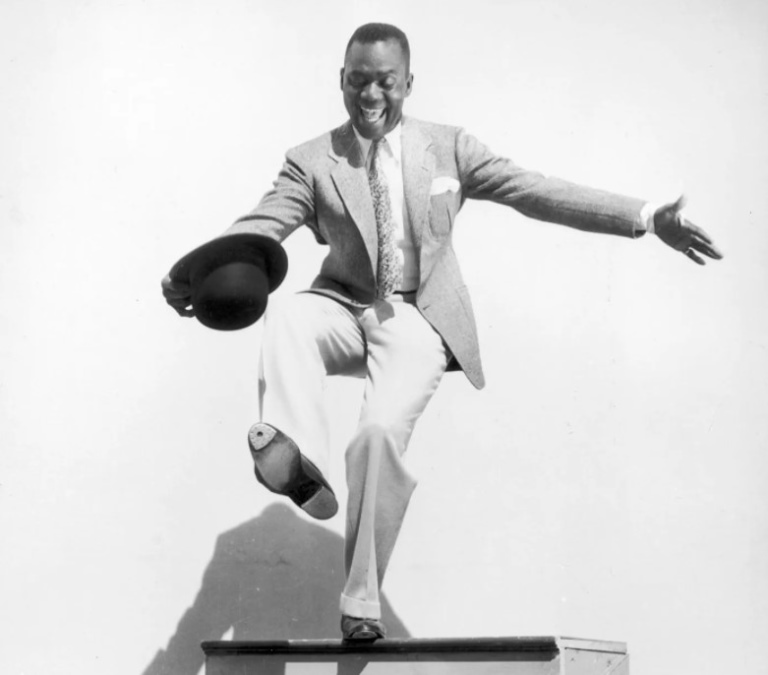Characterized by the sounds of specialized shoes tapping on the dance floor, tap dance is a unique dance style because the percussion and the beat of the accompanying music are up to the dancer in most cases.
The fast pace and energetic movements turn tap dance into a temptation for both the performers and the viewers. Here is a thorough approach before you start practicing tap!
Table of Contents
Tap Dance Origin & History
Although the United States claimed the title as the tap dance origin country we know nowadays, its roots are traced back so much further, perhaps to 300 years ago.
The cultural origins of tap dance are deeply rooted in Western Africa and Ireland. With traditional African music being banned, the slaves chose to use their bodies to create percussion beats instead.
Combined with the clog dance from Ireland, the first form of tap was born.
Later in the 20th century, researchers looked more deeply into the history and shared opinions about the more urban areas nurturing and developing tap dance, the Five Points District in New York, for example.
These places were often crowded with various ethnic groups and hence had a direct influence on the syncopations and the rhythms of the dance.
It was not until the 1920s did the dance shoes officially adopt the tap as part of them. First made of wood, this extra piece eventually became more associated with metal.
In the next few decades, tap dance was featured in films and theaters more often, and it inevitably became much more popular than before.
Classes for tap dance were held, followed by competitions allowing tap dance. Therefore, tap dancers transformed into actors, instructors, and competitors.
The end of the previous century witnessed a decline in the popularity of tap dance, though the renowned and successful shows on Broadway helped tap dancing return to the race.
Characteristics of Tap Dance
A tap performance doesn’t start until the first beat count reaches eight. Musical instruments are traditionally optional. When performed without music, the tap dance style is addressed as “a cappella”.
When tap dancers focus on the footwork and minimize arm movements, they are called “hoofers” and the style is “rhythm tap”, mostly employed by the slaves in the United States.
The early tap dance featured a ballroom form with ballet elements, nowadays more well-known as the “Broadway” style. The steps are what beginners are taught, but made more memorable with high-heeled shoes.
On the other hand, we also have “Soft-Shoe” – a tap style that requires no special shoes. Rather than the tapping, the sliding of the foot was more common for this style and thus more popular.
However, its popularity has decreased drastically since then.
Tap Dance Moves
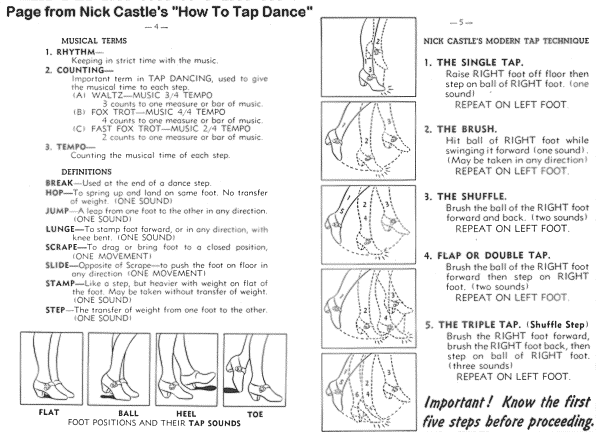
Since the art of tap dance lies within the sound the dancers can make, the simpler the sound, the more basic the steps are.
If you are a beginner, you will be instructed to start with “one-sound” steps, including toe drops, heel drops, scuff, pull, hop, brush, leap, chug, and step.
When you have achieved the basic skills, your next goal will be to combine the basic steps and create new moves.
With double and even triple variations (riffs, timesteps, pullbacks, and drawbacks) for each step, the diversity in tap dance moves has almost no limit.
The next layer of intricacy to add to your performance would be the turns, and tap dance is quite open regarding these aspects.
Dancers can do step heel turns, cramp-roll turns, drag turns, or Maxi Ford turns – all of which are available in all directions.
Proficient dancers will synchronize their arms with the footsteps in their routine for more fluidity as well as expressiveness. The more notable performers of tap dance are usually highly acclaimed for their facial expressions too.
Tap Dance Attire
The original tap dance didn’t put too much restriction on the attire because it was a means for the African-born slaves to preserve their culture.
And, it was always a form of relaxed entertainment until the movies and Broadway shows came into play.
Due to the influential content, we are more familiar with male tap dancers wearing tails and top hats while the females adorn gorgeous gowns matching their partner’s outfit.
However, whether in a casual or formal scene, the shoes for tap dance remain a unique feature.
Tap Dance Shoes
There have always been some modifications to the soles of tap shoes. They were originally made of wood and divided into two types: full sole and split sole.
- Full sole means the material will run along the bottom of the shoe without disruption, hence it resembles a second outsole and feels very stable.
- Split sole means the front and the back of the sole have a gap in between, so the shoe can bend as you wish and feel more flexible.
What separates the modern tap dance we know from the complicated origins and evolutions is the tap shoes introduced in the 20s.
At first, all people did was screw or nail metal pieces to the heels and the toes of their dance shoes, be it the full sole or the split shoe design.
As soon as these shoes were included in performances, they became popular and well-received because they added a unique element to the stage and evoked more emotions from the crowd.
The weight and the surface of the tap determine how it sounds, so a convex tap will make a completely different sound compared to a concave one. The differences also come from the materials used and the possible soundboard.
Today, you will find various heel heights on tap shoes, and the heels might be either stacked leather or wood. The toe box shares the same nature and can be reinforced or softened depending on the requirements.
Tap Dance Music & Songs
The increased popularity of tap dance in the first half of the 20th century has so much influence on tap dance.
The creative and seemingly spontaneous pattern inspired the drummers back in the day, and recordings showed that the rhythms of that early tap dance were so much ahead of the time.
In most cases, jazz music works well with tap sounds and eventually became the music genre associated with dance. More and more collaborations were created between tap dancers and jazz musicians.
When tap dance expands into a full show and becomes the center of attention at events, it is no longer restricted to a certain type of music. The boundaries between music genres are therefore blurred, giving tap performances a whole new vibe.
Here are some recommendations from us if you are looking for top tap songs:
- “My Funny Valentine” by Frank Sinatra
- “Cantaloupe Island” by Herbie Hancock
- “Take Five” by Dave Brubeck
- “Georgia On My Mind” by Ray Charles
- “Lullaby For Birdland” by George Shearing
- “My One And Only Love” by John Coltrane
- “Body And Soul” by Coleman Hawkins
- “What A Wonderful World” by Louis Armstrong
- “Un Poco Loco” by Bud Powell
- “Mood Indigo” by Duke Ellington
Notable Tap Dancers
When tap dance turned into an art rather than a form of entertainment, its dancers transformed into artists as well.
They have the skills to stand on the stage and the charm to keep the crowd’s eyes on them, and these famous tap dancers are the most acclaimed in the world.
John W. Bubbles
People remember him as the creator of “rhythm tap” with percussive drops on his heels instead of toes like various other dancers of his time.
There is a sprinkle of improvisation and a whole lot more freedom in his movements. He considers it a stone hitting two birds: he can surprise his audience and avoid getting his moves stolen.
In 1980, he was awarded the Life Achievement Award by the American Guild of Variety Artists. After he passed away, his name joined the Tap Hall of Fame.
Nicholas Brothers
When talking about the Nicholas Brothers, people will remember them as a composed act of two great dancers with excellent technique and creative moves.
They had the most exuberant jumps and rigorous arm movements while performing, which might only be able to emulate with the help of computers.
Due to the prejudice of their time, the credits to them in movies and films were quite limited, though they had the chance to stand in master classes and teach some of the most skilled tap dancers of the future generations.
Arthur Duncan
Known as “Entertainer’s Entertainer”, Arthun Duncan was the first regular African-American face on a TV variety program despite the initial objections targeting him back in the day. Duncan also had many opportunities to perform all over the world.
With nothing less than the highest level of skills and the longevity of his career, Duncan probably received more recognition and awards than any of his fellow dancers. In 2020, his name was inducted into the Tap Hall of Fame.
Bill Robinson
With nearly six decades of being active in the entertainment industry, Bill Robinson had one of the longest careers among dancers and witnessed all the changes in technology and tastes in American entertainment.
His talents truly surpass racism.
National Tap Dance Day in the US is set on the anniversary of Robinson’s birth – an honor any dancer would love to have.
Tap Dance Videos
If you want to have a more thorough view of tap dance, finding quality video content is one of the most effective approaches.
A more recent title is “No Maps on My Taps”, a PBS documentary that won the 1979 Emmy and contributed tremendously to the return of tap dance in terms of popularity.
“Happy Feet” is an animated film released in 2006 with huge success at both the box office and the critical aspect. It is an inspiring and easy approach for all age ranges.
Final Words
Maybe not all of us are familiar with the steps of tap dance, yet the dance is certainly popular enough to evoke some memories in our minds.
There are many more factors behind it, and tapping is more than merely making noises with metal pieces on the bottom of your dance shoes.
We hope you enjoy the interesting history of tap dance as much as the practice of getting the steps smoothly.


